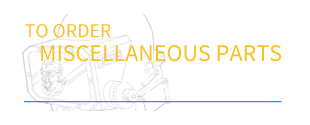DESCO Diving Equipment Safety Information

Diving Safety for Commercial Diving
Diving is a potentially hazardous activity. If practiced incorrectly or with incomplete planning and procedures, diving can expose a person to considerable risks including serious injury or DEATH. It requires specialized training, equipment, and experience. DESCO recommends the guidelines established by the Association of Diving Contractors Consensus Standards for Commercial Diving Operations, as well as OSHA and USCG Federal Diving Regulations. NOTE: No standard will ever exist which can substitute for common sense, sound judgment, and a continuing concern for maximum safety. SAFETY IS NOT A RULE BOOK. IT IS A STATE OF MIND.
Cold Water Diving
Any air (pneumatic) system given the right combination of temperature and/or airflow has a propensity to freeze up. It is prudent therefore to check for moisture regularly and install a secondary in-line dryer system if necessary. If moisture freeze up problems persist contact your compressor dealer for recommendations to suit your particular needs.
DESCO Air Hat Safety Notices
Safety Issue: Air Distributor Packing (8/13/12)
We receive a air hat from a customer for a diving equipment inspection and repair. He just bought the helmet used and wanted it updated and certified for diving. During evaluation we found several issues of incorrectly installed parts. The most troubling find was what the air distributor was packed with. We can't call it Steel Wool as we have not seen anything this coarse before. when the packing was removed from the air distributor small pieces and particles fell from the housing. Had these bits been blown out into the helmet they could have embedded themselves in the diver's cheek, eyes, or have been inhaled into the lungs. Any one of these injuries could cause a debilitating or life threatening infection. NEVER use any material except Lambswool in the air distributor.
Safety Issue: Air Hat neck ring clamping system.
Last week Ric received a call about a diver who had the lock and the clamp open up on one side of his Air Hat. This is the first instance we can recall of this event happening. The diver was in a confined area with snag hazards. It appears the lock was snagged and opened without the diver knowing. Subsequently the clamp was snagged and opened allowing a few drops of water (as stated by customer) to enter the helmet.
The clamp and lock system on the Air Hat depends upon frictional drag placed on the clamp and lock by the retaining bolts. Nylon washers act as spacer/bearing surfaces to prevent metal on metal. The clamp and lock open in opposite directions making a single snag virtually (never say never) impossible. The customer asked us to develop a spring loaded lock for the situation they are diving in to mitigate this issue. We complied and now have a conversion kit available. We do not recommend using the spring loaded lock for general use as the kit is new and we do not know how the springs will stand up to extended hard use. Also the spring lock will make emergency bailout from the helmet more difficult as the lock will have to be held back to open the clamp.
The clamp and lock system was part of the original design of the Air Hat and has worked reliably for 47 years. The incident above is serious but should not be taken as indicative of a significant risk factor in using the Air Hat.
Recommendations:
Always check the drag on the clamps and locks during pre-dive. Adjust as necessary. Routinely check the condition of the retaining bolts, nuts, and Nylon washers. Replace the Nylon washers if any sign of wear or compression is evident.
The safety notices below are the result of situations DESCO has found when Air Hats have been returned to us for repair or inspection
Air Diffuser/Muffler and Lambswool
The Air Diffuser/Muffler in the DESCO Air Hat comes packed with Lambswool to reduce the noise created by the airflow through the system. NEVER substitute a different material for Lambswool in the Air Diffuser/Muffler. Air Hats have come back to DESCO for repair with steelwool, cotton, fabric, brass pot scrubbers, and other materials in the Air Diffuser/Muffler. Lambswool is resistant to moisture, oil, and compacting, and it allows good air flow. It also will trap dirt and contaminates from the compressor and hose. Checking the condition of the Lambswool should be a routine part of maintenance of your Air Hat. Any unusual or excessive contamination of the Lambswool can indicate a problem in the air supply system. Oil or grease, excessive moisture, dirt, or rubber particles in any significant amount in the Lambswool should be investigated. Lambswool is available at stores which sell health and beauty supplies (i.e. drug stores, grocery stores, department stores).
Teflon® Tape and air delivery
Never use Teflon® tape on any part of the primary or secondary air delivery system. Strands of Teflon® tape may enter the air delivery system and clog the air diffuser or air control valve resulting in the loss of breathing air. DESCO recommends using a good quality pipe joint compound available at hardware stores and home centers.
Suit Inflator Whips and air delivery
The DESCO Air Hat does not have a provision for connecting a suit inflation hose from the helmet to the suit. It has been noted that some divers have installed additional plumbing on the Air Hat inlet to equip it with a inflator whip hose. This practice presents the possibility of snagging the helmet or breaking off the additional plumbing and/or the air inlet elbow. DESCO advises against using the primary air source for anything other than diver life support. A secondary source of air should be used for suit inflation, such as a pony bottle. Never modify the air delivery connections on the Air Hat. The air inlet elbow is designed for the lower Non-Return Valve to accept the umbilical primary air line. The upper Non-Return Valve is designed to accept the same standard hose fitting as the lower, but it will also accept a SCUBA whip from a Bailout Bottle. Non-Return Valves which are made to accept a SCUBA Whip have a "B" stamped next to the inlet.
Removal of Double Exhaust Valve Center Section
DESCO has received Air Hats for repair where the center section of the Double Exhaust Valve have been removed. The reason for this action is unclear. Removal of the center section WILL NOT increase the flow rate through the exhaust. DESCO has tested the exhaust and the flow rate is the same either way. What removal of the center section does do is increase the risk of leak back into the Air Hat exposing the diver to contaminated water. The Double Exhaust Valve should be checked and maintained on a regular basis. Dirt, hair, and old flapper disks can effect the performance of the Double Exhaust Valve.
Non-Factory Modifications to the Air Hat
Making modifications to the Air Hat not authorized by DESCO could result in the failure of the Air Hat to perform safely and effectively. Do not drill holes through the Air Hat to mount lights, cameras, or other equipment. Never attempt to powder coat a Air Hat as the solder will melt out before the coating reaches its necessary melting temperature. DESCO is willing to make reasonable modifications to Air Hats to address individual divers needs, as long as it does not compromise diver safety.
Diving Equipment Routine Maintenance
Performing regular inspection and maintenance on your diving helmet and related equipment will significantly increase safety and reliability. Implementing a preventative maintenance program will lower costly down time and potential safety risks. Using well maintained equipment you can operate more efficiently, at lower cost.
All components of the diving outfit work together to provide the diver with a safe environment. Each part from the compressor to the dry suit have to perform correctly in order for the diver to complete a dive in a timely and safe manner. Servicing each part regularly will reduce the possibility of breakdown on the jobsite, where more than just time could be lost.
Replica/ Reproduction Helmets
With the increase in interest in collecting and using old diving equipment the possibility of someone attempting to use a replica/ reproduction helmet by accident or intentionally also increases. These helmets were never intended for actual use. NEVER attempt to use any diving helmet without thoroughly inspecting and testing it before entering the water. ALWAYS make sure you have the proper training, equipment, and safeguards in place before you dive.




 0 Item(s)
0 Item(s)




